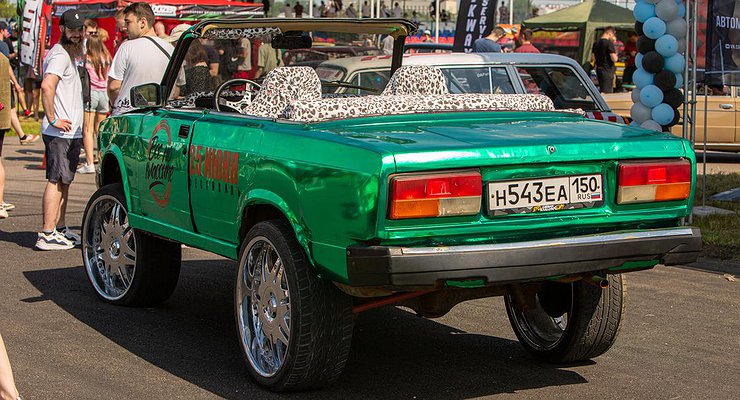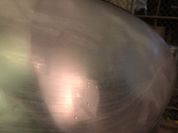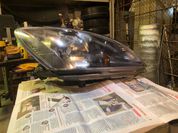Why It Is Absolutely Impossible To Install Larger Diameter Wheels On A Car
- July 1, 2022
- 0
To make your car more spectacular – this idea is cherished by many car owners. Some of them bring ideas to life. As a result, the base car
To make your car more spectacular – this idea is cherished by many car owners. Some of them bring ideas to life. As a result, the base car

It’s no secret that almost all cars look less impressive on standard tires, as if they were shod with larger diameter tires. Some car manufacturers even allow it. Admittedly, the price for a set of tires larger than an inch or two can really drain the car owner’s wallet. In some cases you will indeed have to switch disks. But even this doesn’t stop fans from looking cool on the road. And then everything is like lip bloating – every time it seems that if only one size bigger, the wheels wouldn’t interfere with my car. And here, as in the case of lips, many are mistaken, having no idea of the consequences that await them.
To begin with, it is worth recalling that wheels with a larger diameter, not allowed by the car manufacturer and not listed in the operating documentation, are not allowed to be installed by the technical regulations of the Customs Union. There is no mention of all kinds of “welding” and other “self-propelled guns” at all – it is strictly prohibited. And yet, move! Because making up laws is one thing. But keeping an eye on them is quite another. Well, if so, let’s see what else threatens the installation of wheels with a non-standard diameter.
So, if the installation of tires with a size larger than the permissible size includes, among other things, the replacement of discs, then first of all it entails an increase in the mass of the wheel as a whole. This in turn puts a strain on the engine – it needs more energy to spin the heavier wheels. As a result, fuel consumption increases, dynamics deteriorate, suspension elements designed for a certain load wear out faster.
As a rule, with an increase in the diameter of the rims, their width also increases, as does the depth of the rims in the wheel arches. Going back to the increased load, remember that every car has wheel bearings that feel like these changes. So, we are preparing for the fact that with the installation of heavier wheels, their resource will be significantly reduced.
The weight of the tires themselves is also different – larger diameter tires are naturally heavier. And this also goes to the treasury of unsprung masses. If you want a larger diameter of the wheels without compromising the clearance in the wheel arches, then as a rule, when installing new wheels, they put rubber with a lower profile. And this, friends, is a direct path to driving discomfort – the low profile goes noticeably harder on the tarmac and reads all the little bumps in detail.
Shock loads with low profile tires also hold up for worse. And this is again damage to the discs and suspension. In addition, the risk of damage to low profile “rollers” is significantly higher than with higher tires. Yes, and flying off on wider tires in heavy rain is more likely due to the latter’s propensity to aquaplane.
But that is not everything. Larger diameter wheels compensate for the inaccuracy of the speedometer, which initially overestimates the actual speed by several kilometers. If the wheels are much larger, the inaccuracy of the readings is no longer in favor of the car owner.
If you decide to put larger diameter wheels on your car, do it wisely. Check the technical documentation and read the car manufacturer’s recommendations. Only fit tires and wheels of approved sizes. Then do not damage the car and the appearance will fully satisfy you. After all, as with lips, it is important not to overdo it here.
/d60299b021e46e09c72c45bf64a62dd5.jpeg)
/9f57abde25cb5c984b0727578f50288a.jpeg)


/e7d06c893ae2ff3a47dafbbe3e336287.jpeg)
It’s no secret that almost all cars look less impressive on standard tires, as if they were shod with larger diameter tires. Some car manufacturers even allow it. Admittedly, the price for a set of tires larger than an inch or two can really drain the car owner’s wallet. Indeed, in some cases, you may also need to switch disks. But even this doesn’t stop fans from looking cool on the road. And then everything is like lip bloating – every time it seems that if only one size bigger, the wheels wouldn’t interfere with my car. And here, as in the case of lips, many are mistaken, having no idea of the consequences that await them.
To begin with, it is worth recalling that wheels with a larger diameter, not allowed by the car manufacturer and not listed in the operating documentation, are not allowed to be installed by the technical regulations of the Customs Union. There is no mention of all kinds of “welding” and other “self-propelled guns” at all – it is strictly prohibited. And yet, move! Because making up laws is one thing. But keeping an eye on them is quite another. Well, if so, let’s see what else threatens the installation of wheels with a non-standard diameter.
So, if the installation of tires with a size larger than the permissible size includes, among other things, the replacement of discs, then first of all it entails an increase in the mass of the wheel as a whole. This in turn puts a strain on the engine – it needs more energy to spin the heavier wheels. As a result, fuel consumption increases, dynamics deteriorate, suspension elements designed for a certain load wear out faster.
As a rule, with an increase in the diameter of the rims, their width also increases, as does the depth of the rims in the wheel arches. Going back to the increased load, remember that every car has wheel bearings that feel like these changes. So, we are preparing for the fact that with the installation of heavier wheels, their resource will be significantly reduced.
The weight of the tires themselves is also different – larger diameter tires are naturally heavier. And this also goes to the treasury of unsprung masses. If you want a larger diameter of the wheels without compromising the clearance in the wheel arches, then as a rule, when installing new wheels, they put rubber with a lower profile. And this, friends, is a direct path to driving discomfort – the low profile goes noticeably harder on the tarmac and reads all the little bumps in detail.
Shock loads with low profile tires also hold up for worse. And this is again damage to the discs and suspension. In addition, the risk of damage to low profile “rollers” is significantly higher than with higher tires. Yes, and flying off on wider tires in heavy rain is more likely due to the latter’s propensity to aquaplane.
But that is not everything. Larger diameter wheels compensate for the inaccuracy of the speedometer, which initially overestimates the actual speed by several kilometers. If the wheels are much larger, the inaccuracy of the readings is no longer in favor of the car owner.
If you decide to put larger diameter wheels on your car, do it wisely. Check the technical documentation and read the car manufacturer’s recommendations. Only fit tires and wheels of approved sizes. Then do not damage the car and the appearance will fully satisfy you. After all, as with lips, it is important not to overdo it here.
Source: Avto Vzglyad
I’m Sandra Torres, a passionate journalist and content creator. My specialty lies in covering the latest gadgets, trends and tech news for Div Bracket. With over 5 years of experience as a professional writer, I have built up an impressive portfolio of published works that showcase my expertise in this field.